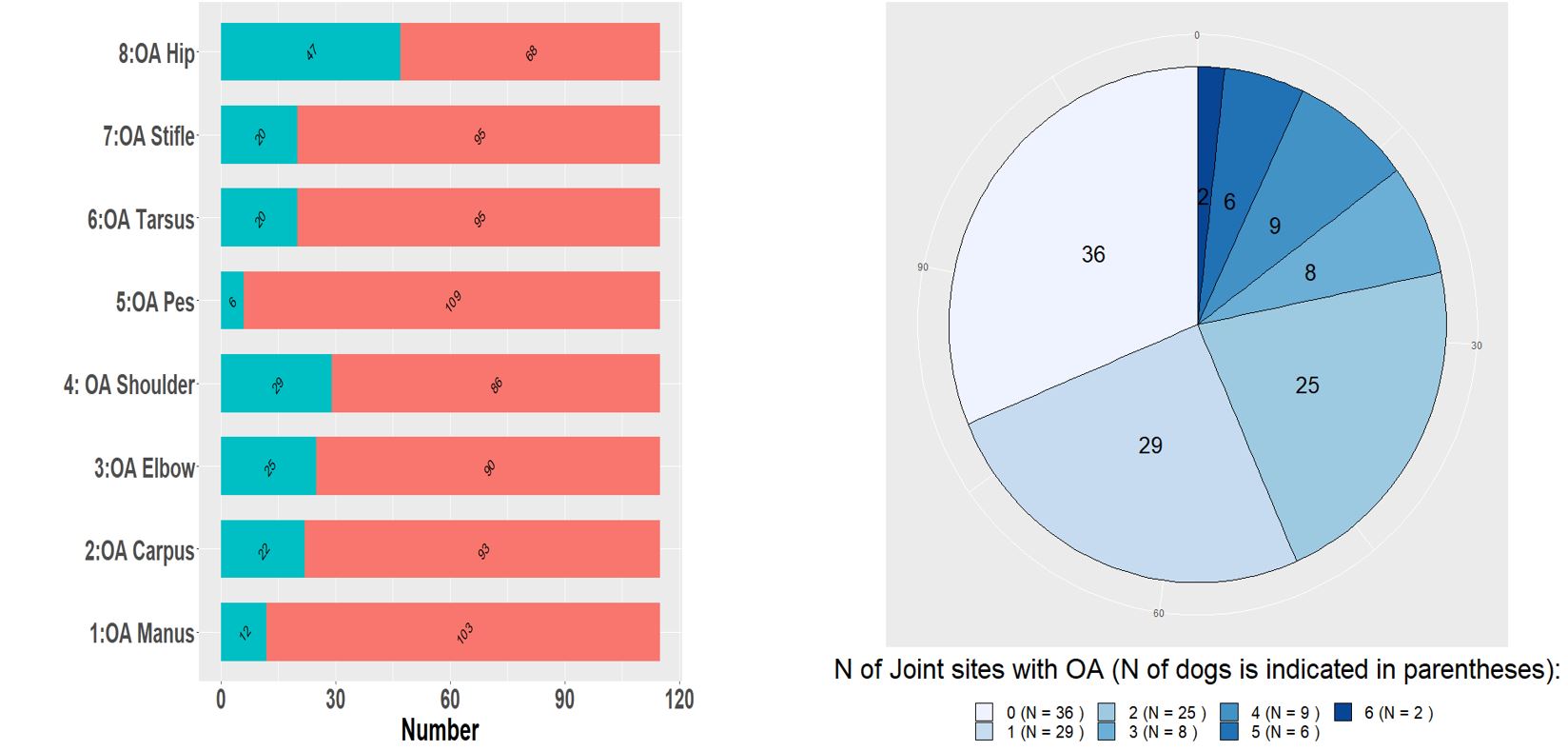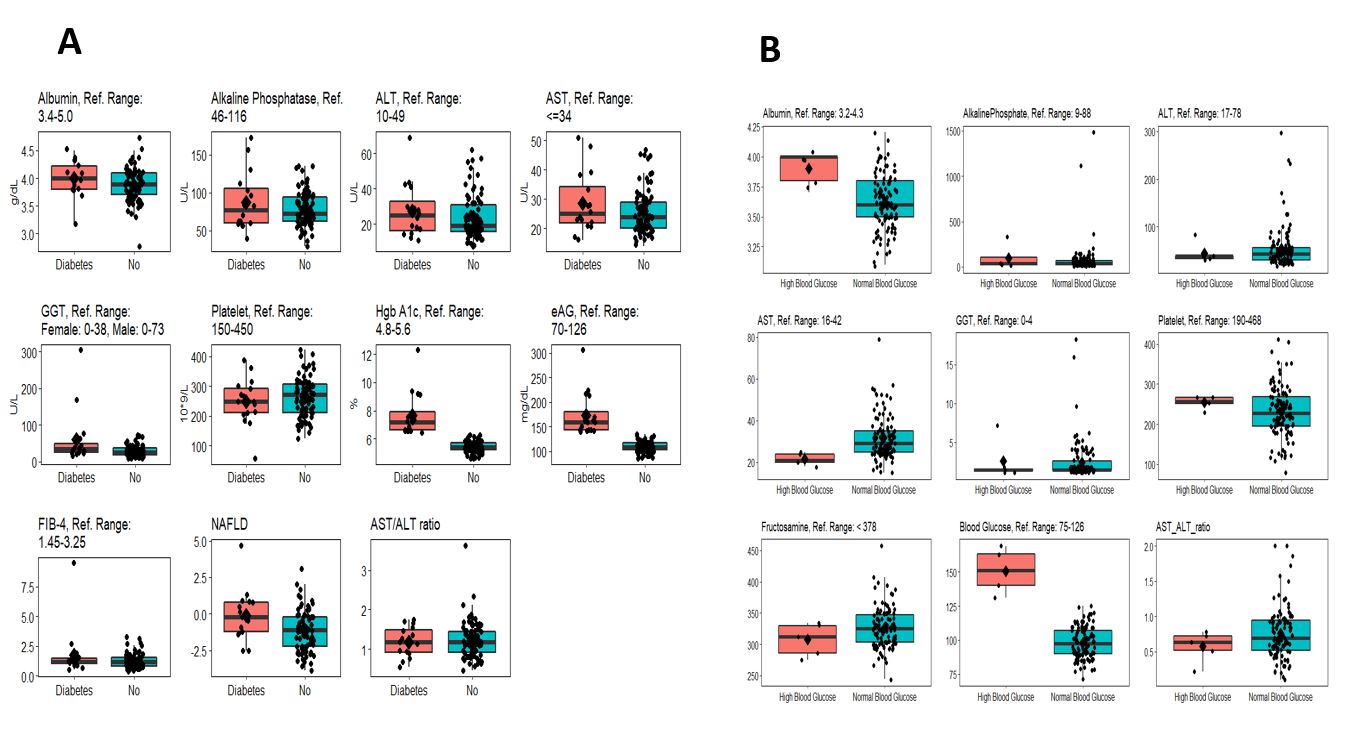Session Information
Session Type: Poster Session C
Session Time: 10:30AM-12:30PM
Background/Purpose: Multiple joint osteoarthritis (MJOA) is a progressive, highly prevalent disease affecting millions of Americans and as well as pet dogs. This preliminary analysis sought to introduce and describe a new, actively enrolling study that aims to define biomarkers predictive of development and worsening of MJOA. Specifically, we describe the frequency of radiographic MJOA (rMJOA) and symptoms in 100 Johnston County Health Study (JoCoHS) human participants and 115 pet dogs independently enrolled at the NC State University (NCSU) College of Veterinary Medicine.
Methods: All JoCoHS participants enrolled in this study (N=100) provided demographic, clinical information, anthropometric, symptomatic and functional assessments, and multiple joint radiographs. Blood, urine, and stool samples were collected for measures of biomarkers, cytokines and microbiota profiling. Similar data were collected from an independent group of pet dogs (N=115) recruited from NCSU. The number of painful joints was calculated from a map, which involves a graphical representation of unilateral and bilateral joints. For MJOA, we specified unique joint sites, such that involvement of the bilateral joints counted as a single site rather than two joints. rMJOA was defined as at least 3 unique appendicular joint sites involved in both humans and dogs. If at least one of these sites was associated with pain, it was considered symptomatic (sxMJOA). Descriptive statistics were calculated for demographic characteristics, radiographic and symptomatic measures, and lab values (liver enzymes, albumin, platelets) using means and standard deviations for continuous, frequencies and percentages for categorical variables. No statistical comparisons were performed in this descriptive abstract.
Results: One hundred human participants (63% men, 33% Black, 13% Hispanic; mean age 56 yrs) enrolled in the JoCoHS, and 115 dogs enrolled through NCSU (40% spayed females, 57% neutered males, 3% intact males, mean age 8 yrs, 49% mixed breed) were included. The frequency (n, %) of joint-specific human OA and the distribution of the number of joints involved are shown in Figure 1. One in 5 (21%) JoCoHS participants had rMJOA, with 13 participants having sxMJOA (13%). Among 100 participants, the mean number of painful joints was 8 (SD=6).
The frequency of joint-specific OA in 115 dogs and the distribution of the number of joints affected are shown in Figure 2. rMJOA was present in 25 (22%) dogs, 24 of them had sxMJOA. Among 115 dogs, the mean number of painful appendicular joints was 4 (range 0-12).
The lab values demonstrate expected ranges for these population-based cohorts, including mostly normal liver function, without significant differences by hyperglycemia status (Figure 3, A: Humans; B: Dogs).
Conclusion: These two population-based cohorts demonstrated similar frequencies of rMJOA (~20%) and similar number of joints involved supporting the use of dogs to model MJOA. Their basic laboratory values are consistent with the community-based nature of enrollment, and support generalizability of results. Samples from these cohorts are undergoing analysis to understand associations between MJOA and biomarkers, cytokines, dysbiosis, and intestinal permeability.
To cite this abstract in AMA style:
Arbeeva L, Johnson K, Savage-Guin S, Walker T, Enomoto M, Stevens C, Koskinen M, Cole T, Aker S, Thonen-Fleck C, Loeser R, Renner J, Lascelles D, Golightly Y, Nelson A. Cross-sectional Associations of Radiographic Multiple Joint Osteoarthritis and Pain with Demographic and Clinical Characteristics: Design of a Multi-modal Study in Human and Pet Dogs [abstract]. Arthritis Rheumatol. 2024; 76 (suppl 9). https://acrabstracts.org/abstract/cross-sectional-associations-of-radiographic-multiple-joint-osteoarthritis-and-pain-with-demographic-and-clinical-characteristics-design-of-a-multi-modal-study-in-human-and-pet-dogs/. Accessed .« Back to ACR Convergence 2024
ACR Meeting Abstracts - https://acrabstracts.org/abstract/cross-sectional-associations-of-radiographic-multiple-joint-osteoarthritis-and-pain-with-demographic-and-clinical-characteristics-design-of-a-multi-modal-study-in-human-and-pet-dogs/



